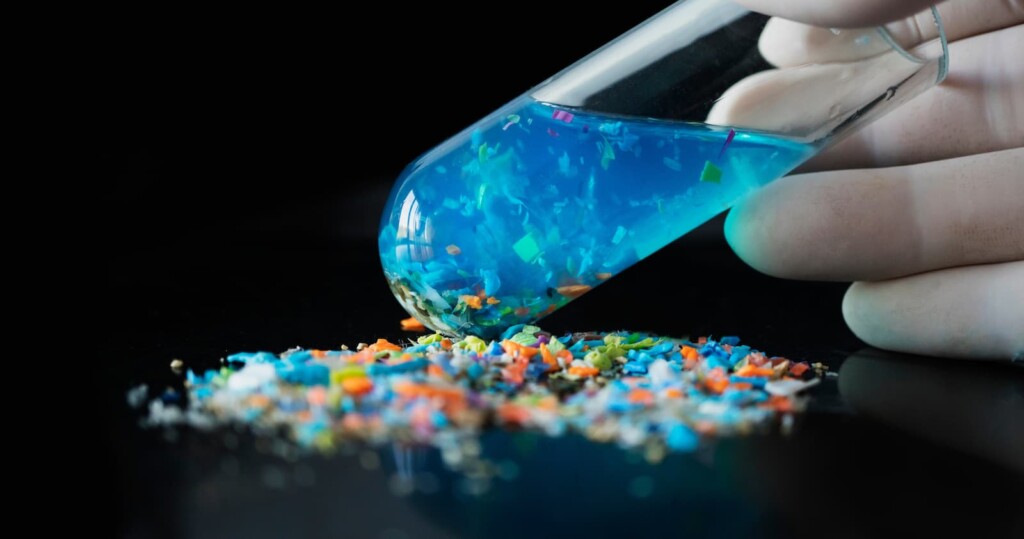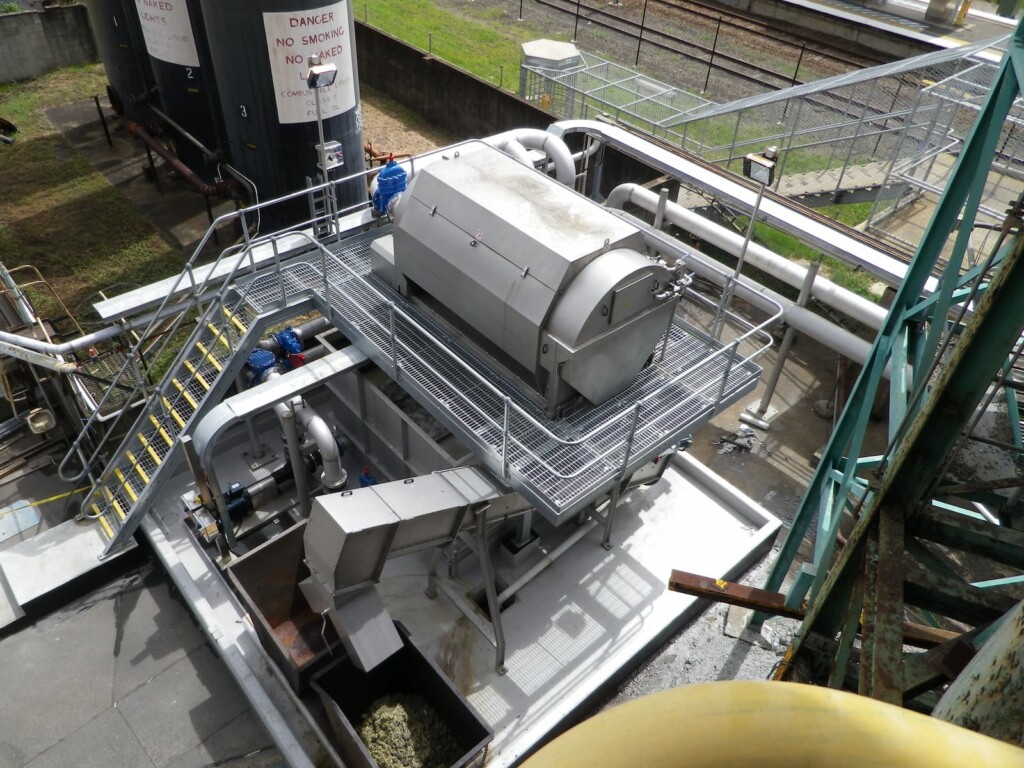Plastic waste can take anywhere from 20 to 500 years to decompose, and even then, it never fully disappears; it just gets smaller and smaller, if left to its own devices.
By entering waterways, soils, atmospheres and food chains as microplastic particles, (less than 5mm) this intractable waste is harmful to aquatic, animal, and human life in major and expanding ways.

Microplastics entering wastewater treatment plant processes can create enormous issues downstream if they are not excluded or removed by treatment technologies
“The potentially enormous scale of the microplastic damage is still being researched, but study to date suggests it clearly presents threats such as oxidative stress, DNA damage, organ dysfunction, metabolic disorder, immune response, neurotoxicity, as well as reproductive and developmental toxicity.
“The science on the extent of damage is by no means complete, but we already understand way more than enough to know that we don’t want this pernicious pollution in our eco-systems,” says Australasian wastewater authority, Michael Bambridge.
Microplastics can come from a variety of sources, including larger plastic pieces that have broken apart, plastic fibres from textiles, resin pellets used for plastic manufacturing, or in the form of microbeads, which are small, manufactured plastic beads used in health and beauty products. Soft plastics, such as food wrappers and bags that are omnipresent in our daily lives, pose significant environmental threats once discarded into landfills or oceans, says Bambridge, who has more than 30 years municipal and industrial wastewater treatment experience in Australasia and Asia.
Focus of environmental treatment
“Because wastewater treatment plants (WWTPs) are a focus of domestic and industrial waste collection and treatment, they can also be a pathway of microplastics to waterways and marine environments.
“But wastewater treatment plants can also be a focus of environmental treatment and benefits, because their processes can remove a large portion of microplastics from wastewater before it’s released into the environment via waterways,” says Bambridge, whose company, CST Wastewater Solutions, has engineered new and finer screening processes to remove pollution from waste and to stop harmful elements entering wastewater streams to inhibit their effectiveness in removing microplastics. Microplastics are mainly removed during screening, biological treatment, and sedimentation, he says.
“WWTP microplastic removal is a process of multiple steps, in which each step provides additional benefit where the step before is efficiently performed. There is no one single “silver bullet” way to treat microplastics pollution, but the evolving train of technologies includes several steps that are already effective and available, he says. Optimum technologies include:
1. Fine screening primary treatment, which is an area of major progress and opportunity. “The best way to stop plastics and microplastics passing through WWTP processes and into the environment is to collect as many as possible of them at the screening stage,” says Bambridge. Given the evolution of ultra-fine screening technologies down to 0.5mm, many microplastics can be removed before they enter wastewater treatment process. Such very fine screening processes include locally manufactured high performance and low maintenance stainless steel screens and rotary drum screen compactors from CST Wastewater Solutions, specifically engineered to address the needs of in Australasia and the Asia-Pacific.

Rotary drum screen technology can deliver fine apertures of 0.5 mm to 1.0 mm.
2. Good secondary and tertiary wastewater treatments are also effective against microplastics. Secondary treatment uses biological methods to purify water further following the physical primary treatment screening process. This phase in wastewater treatment uses microorganisms to consume and remove waste, preparing the water for the tertiary treatment phase before it returns to a natural water source. On average, secondary treatment can remove 88% of microplastics, and tertiary treatment can take this to 94%.
However, removal rates vary between WWTPs and can be affected by the size, shape, and quantity of microplastics, which is why such systems need to be engineered to the particular needs of different wastewater streams – “Rather than one-size-fits-all treatments, which are expensive follies that invite high maintenance and low performance”.
3. Microfilters/ multimedia filters are suitable for the widest range of applications and particularly effective for removal of organic and/or inorganic suspended solids from water down to 5 micron and below. Multimedia filters are suited for many applications as re-use applications, water pre-treatment applications for reverse osmosis and de-ionisation systems, granular activated carbon, production of drinking water, Iron and Manganese removal from surface, ground or well water, wastewater tertiary treatment, swimming pool filtration, and cooling water side stream recycling.
4. Membrane bioreactor (MBR) wastewater treatment in a closed controlled environment reactor, or tank, which combines secondary and tertiary treatment processes. MBR’s secondary treatment removes organic matter and suspended solids from wastewater through aeration and filtration. Their tertiary treatment produces high-quality filtrate that can be reused.
5. New technology. Research is ongoing to develop new technologies and modify existing WWTP systems to more completely remove microplastics. Currently, several physical and chemical methods are available, including filtration, sedimentation, and chemical degradation. However, these methods can be costly, lower efficiency and generate secondary pollutants.

CST Managing Director Michael Bambridge has more than 30 years’ experience in global wastewater technologies
“Furthermore, lack of standardisation in the measurement and reporting of microplastics in wastewater makes it difficult to accurately assess microplastic impact on the environment because of the large volumes of wastewater and the amount of sludge that’s reused on land,” says Bambridge, who is a chemical engineer who has been involved in some of the Global Water and Energy organisation’s water treatment and waste-to-energy initiatives worldwide.
Currently, ∼380 billion m3 (380 trillion litres, or 380 cubic kilometres) of wastewater is generated globally every year, according to the UN Environmental programme.
“And the UN warns that wastewater production is expected to increase by 24% by 2030 and 51% by 2050. So this problem is expanding, and the associated problem of microplastics is growing with it,” says Bambridge.
“Microplastics isn’t an issue that we can afford to wait to deal with. It is an immediate problem, a large and growing issue, that we need to deal with the tools and technologies already at our disposal.”
